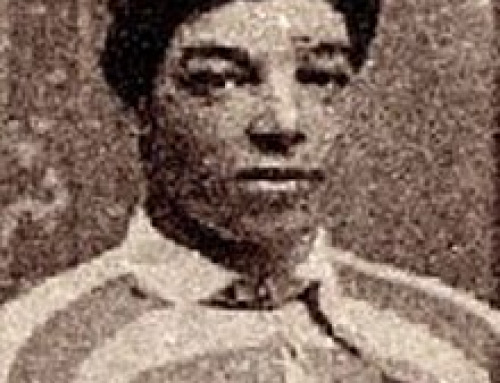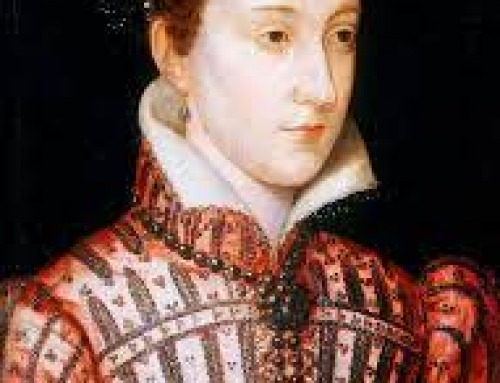
Flora Macdonald was born at Milton, on South Uist, where even today you can still see the ruins of her childhood home She had two brothers, Angus, who later inherited the Milton tack, and Ronald, who died young. Whilst some parts of the MacDonald clan remained Catholic, particularly in the Hebrides, Flora’s family was part of South Uist’s Protestant minority. Through her father’s younger brother, who was the unlikely Episcopalian Rector of Kilchoan and a Clanranald tacksman based in Moidart, she was first cousin to the Jacobite war poet Alexander McDonald who along with Sorley MacLean is considered one of the two most important figures in Scottish Gaelic literature.[. Her father died soon after her birth and in 1728 her widowed mother married Hugh MacDonald, Tacksman of Armadale. Meanwhile, Flora MacDonald was brought up by her father’s cousin, Sir Alexander McDonald, Chief of Clan Macdonald of Sleat. Suggestions that she may have been educated in Edinburgh cannot be confirmed, however she grew up in the household of the chief of the Macdonalds of Clanranald, who firmly supported the Jacobite cause. When Bonnie Prince Charlie escaped following the Battle of Culloden in 1746 he went into hiding, depending on supporters to shelter him and hide him from his Hanoverian pursuers led by the Duke of Cumberland. At length, he arrived on the island of Benbecula, where it was decided that he should move on to Skye The island was under travel restrictions, and the prince could not take the risk of being spotted. A Jacobite supporter and distant kinsman named Captain Conn O’Neill asked Flora to help Charles escape. Macdonald herself did not support the Jacobite cause, but she was moved by the plight of the Jacobites after the Battle of Culloden, and at length, she agreed. She later said that she acted from charity, and would have helped the Duke of Cumberland had she found him in a similar situation. She obtained permission from Hugh Macdonald, commander of the local militia and her stepfather, to leave Benbecula. She was allowed to take two servants, and a crew of six sailors. Bonnie Prince Charlie was dressed as an Irish spinning maid named Betty Burke, and in that guise he sailed with Flora to Skye on 27 June 1746. Unlike the scene made famous in the popular ‘Skye Boat Song’, the Prince did not leave baffled foes standing on the shore, and managed to make the crossing unchallenged. From Skye, he made his way at length to Moidart, where he boarded a French ship and escaped to refuge in Europe. .

Unfortunately, the oarsmen talked about this adventure and when Flora Macdonald’s role in the escape came to light she was arrested and imprisoned in the Tower of London.. After Lady Margaret interceded on her behalf with the chief Scottish legal officer, Duncan Forbes of Culloden, she was allowed to live outside the Tower under the supervision of a “King’s Messenger” and released after the June 1747 Act of Indemnity. Aristocratic sympathisers collected over £1,500 for her, one of the contributors being Frederick, Prince of Wales, heir to the throne; she allegedly told him she helped Charles out of charity and would have done the same for him Though she had committed treason by helping Bonnie Prince Charlie, the public, even staunch Hanoverians, regarded her as a heroic figure, primarily because she was a woman. She married Allan Macdonald of Kingsburgh on 6 November 1750, at the age of 28, a captain in the British Army and Kingsburgh’s eldest son. The couple first lived at Flodigarry on Skye and inherited the family estate in 1772 after his father died. In 1774 the couple and their 5 children emigrated to North Carolina and settled on a plantation they named ‘Killegray’ . Her husband Alexander joined a regiment of Royal Highland Emigrants in the American War of Independence,the Anson Battalion of the Loyalist North Carolina Militia, a total of around 1,000 men, including their sons Alexander and James Tradition records that as the Anson battalion assembled in Cross Creek on 15 February 1776, Flora “addressed them in their own Gaelic tongue and excited them to the highest pitch of warlike enthusiasm” a tradition known among the Scottish clans as an “incitement to battle.” They then set off for the coast to link up with some 2,000 British reinforcements commanded by General Henry Clinton, who in reality had only just sailed from Cork in Ireland. Early on the morning of 17th of February, they were along with others unfortunately ambushed quite near the Moore’s Creek Bridge by Patriot militia led by Richard Caswell and along with his troops, Allan MacDonald was taken prisoner After the battle, Flora was interrogated by North Carolina’s Committee of Safety, before which she exhibited “spirited behaviour. In April 1777, all Loyalist-owned property was confiscated by the North Carolina Provincial Congress and Flora was evicted from Killegray, with the loss of all her possessions. After eighteen months in captivity, Allan was released as part of a prisoner exchange in September 1777 and posted to Fort Edward, Nova Scotia as commander of the 84th Regiment of Foot. Here he was joined by Flora in August 1778. In 1779 Macdonald returned to Sky, braving an attempted boarding by privateers on the way, she was wounded during their attack on the ship, her husband joined her after the war was over. According to historian J.P. MacLean, in later life Flora often said that she first served the House of Stuart and then the House of Hanover and was worsted in the cause of each. She died in 1790 at the age of 68 and was followed by her husband in September 1792. They had seven surviving children, two daughters and five sons, two of whom were lost at sea in 1781 and 1782; a third son John made his fortune in India, enabling his parents to spend their last years in some comfort, when she died, the funeral was the largest ever held on Skye. Her body was buried in the graveyard beside the 16th-century church at Kilmuir. Tradition says that she was buried in a shroud made from a bed-sheet used by Bonnie Prince Charlie. Traditional portrayals of the escape focus on Charles, MacDonald being relegated to a secondary role and receiving less credit than is her due. She rarely spoke of the episode and her last contact with Charles was when they parted ways at Portree; it appears at least one motive was that his presence endangered her family Given her popularity as a Jacobite heroine, it is not surprising that a large memorial was erected by her grave, which became a popular destination for tourists. The original monument to Macdonald was destroyed in a gale in 1871. It was replaced by a new memorial designed by Alexander Ross in 1880. Ross’s design includes a 28 foot high Celtic Cross of granite, rising above a slender rectangular chest tomb, also of granite.

A marble plaque was added in 1922 The epitaph reads, ‘Her name will be mentioned in history and if courage and fidelity be virtues, mentioned with honour’. It was written by Dr Samuel Johnson of dictionary fame, who met her during his famous tour of the Hebrides with James Boswell. In 1884, just four years after the monument was erected, the Skye Boat Song was published, and the popular ballad ensured that Macdonald’s fame would not fade. It is easy to find Kilmuir cemetery. Just take the A855 up the north-west coast of the Trotternish Peninsula, past Uig, and keep heading north. Between Kilvaxter and Duntulm a minor road turns right and you will see signs for the Skye Museum of Island Life. Just past the museum you can see the cemetery. It is always open, and it is very easy to spot Macdonald’s grave; just head for the large Celtic cross. When visiting one of the most memorable and moving things about Flora Macdonald’s grave was seeing a bouquet of flowers laid on the memorial. Even after several centuries, people still come to Kilmuir to pay their respects to this brave woman. Today there is a the bronze statue of Flora MacDonald that stands outside Inverness Castle which is the starting or finishing point for those doing the North Coast 500.





